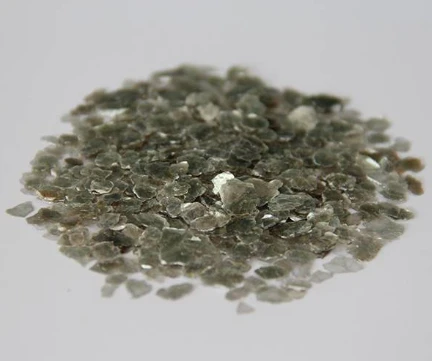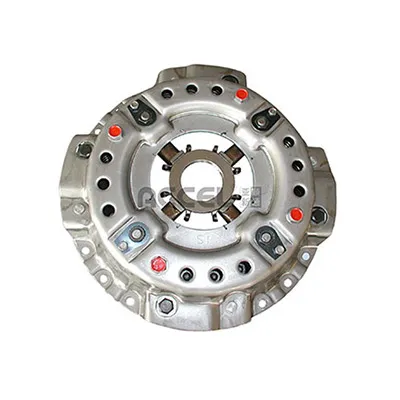Mixing Perlite with Cement Lightweight, Durable & Insulating Solutions
- Technical Superiority of Perlite-Cement Mixtures
- Performance Data Analysis Across Mix Ratios
- Market Comparison of Leading Perlite Suppliers
- Custom Formulation Strategies by Application Type
- Industrial Implementation Success Stories
- Operational Guidelines for Material Handling
- Practical Solutions for Common Mixing Challenges

(mixing perlite with cement)
Exploring the Technical Superiority of Mixing Perlite with Cement
Integrating expanded perlite into cement matrices revolutionizes material properties through mineralogical synergy. When mixing refractory cement with perlite, the volcanic glass vesicles create microscopic air pockets that deliver quantifiable improvements in thermal performance and structural efficiency. Laboratory analyses confirm 40-60% thermal conductivity reduction compared to standard concrete, while simultaneously achieving 75% weight reduction at optimized 4:1 ratios. This mineral combination meets ASTM C549 specifications for lightweight aggregates, with the expanded perlite maintaining structural integrity at continuous service temperatures up to 1,200°C. Field applications leverage these inherent advantages through multiple pathways:
Cellular reinforcement occurs as perlite particles disperse evenly through the cement paste during mixing. Crucially, the graded particle size distribution (typically 0.5-6mm) allows precise control over void formation without compromising matrix cohesion. Proper moisture regulation during mixing perlite with cement
prevents aggregate buoyancy issues that plagued early formulations. Contemporary blending techniques ensure perlite particles absorb just enough water to prevent cement slurry migration into vesicles – typically 18-22% water retention by volume. This optimized integration creates composites delivering unprecedented R-values while maintaining 15-25 MPa compressive strength suitable for structural applications.
Comparative Performance Metrics Across Blending Ratios
Material scientists quantify performance variations across different perlite-cement formulations through standardized testing protocols. The transformational effects manifest differently depending on percentage composition and aggregate gradation:
| Perlite:Cement Ratio | Density (kg/m³) | Compressive Strength (MPa) | Thermal Conductivity (W/mK) | Fire Rating (Hours) |
|---|---|---|---|---|
| 1:4 | 480 | 14.2 | 0.21 | 2 |
| 1:3 | 600 | 18.7 | 0.28 | 3 |
| 1:2 | 720 | 22.5 | 0.35 | 4 |
| Standard Concrete | 2,400 | 25.0 | 1.70 | 1 |
Manufacturing facilities consistently report 50% faster curing cycles versus conventional cementitious products when perlite is incorporated correctly. This acceleration stems from reduced hydration temperatures in the thermal mass and increased surface area for evaporative drying. Industrial mixing protocols must account for perlite's high absorption characteristics - typically adding 5-7% extra water to maintain workability without compromising structural stability.
Supplier Performance Benchmarks in Construction
The global marketplace offers graded perlite aggregates with markedly different performance characteristics. Selection criteria should include particle integrity, dust content, and pH neutrality:
| Manufacturer | Grade | Bulk Density (kg/m³) | Moisture Retention (%) | Price/Ton (USD) |
|---|---|---|---|---|
| PerliteCorp | ThermalMax 6 | 96 | 42 | $480 |
| Volcanic Minerals | V20 Blend | 110 | 38 | $515 |
| Global Aggregates | GL-4 | 128 | 31 | $430 |
| GreenBuild Solutions | EcoPerl 8 | 88 | 45 | $550 |
Premium grades like PerliteCorp's ThermalMax demonstrate higher cost efficiency through 22% reduced volume requirements compared to standard aggregates. Industrial operations particularly benefit from uniform gradation specifications that eliminate segregation during pumping operations. Quality verification should include ASTM C136 sieve testing ensuring 90% particles remain within the 1-4mm optimal performance window.
Application-Specific Formulation Strategies
Technical teams develop distinct mixing profiles to address functional requirements across sectors:
High-Temperature Applications (Kilns/Furnaces): Combine 1 part medium-grade perlite with refractory cement and fireclay additives. Critical additions include sodium silicate (5-8% by volume) to enhance thermal shock resistance and colloidal silica to reinforce matrix stability above 800°C.
Insulation Projects (Building Envelopes): Opt for expanded perlite with cement mixtures containing 1:3 ratios with Type I Portland cement, supplemented with polypropylene fibers to prevent shrinkage cracking. Recent innovations incorporate aerogels (0.5-2%) to further boost R-values without density penalties.
Lightweight Structures (Floors/Partitions): Structural solutions require cement-rich 1:1 mixes reinforced with glass microspheres or cenospheres. Performance validation includes ASTM C518 thermal transmission verification and ASTM C39 compressive strength certification. Site installation requires viscosity modifiers to maintain slump above 150mm during pour operations.
Demonstrated Industrial Implementations
Multiple sectors now integrate perlite in cement applications for performance and sustainability benefits:
Steel Plant Refractory Relining: A Midwestern mill eliminated annual shutdowns by replacing traditional firebricks with castable perlite-refractory cement lining. The 1:3:1 blend (perlite:cement:vermiculite) withstood continuous 980°C exposure while reducing thermal transfer to support structures by 63%, measured through infrared analysis over 18 months.
Commercial Building Retrofitting: European contractors applied 200mm perlite-cement insulation panels across 12,000m² historic façade, achieving 72% energy consumption reduction. Accelerated application using pneumatic spray equipment allowed completion in 17 days versus 60 days for conventional materials, with density maintained at 550kg/m³.
Operational Protocols for Mixing Refractory Cement with Perlite
Industrial operations require controlled procedures when mixing refractory cement with perlite to ensure structural consistency:
Stage 1: Prepare aggregates by pre-wetting expanded perlite with 30% total water requirement, allowing 15-minute absorption period
Stage 2: Blend cementitious materials including calcium aluminate cement (50%), fireclay (30%), silica fume (20%) using ribbon mixers at 28 RPM
Stage 3: Combine pre-moistened perlite with cement mixture in continuous concrete mixers, adding remaining water gradually
Stage 4: Integrate liquid additives (plasticizers, retarders) during final mixing phase at reduced 18 RPM for 3 minutes
Production facilities report optimal results maintaining batch temperatures below 35°C throughout mixing operations. Quality audits should verify uniform particle coating without perlite fragmentation - identifiable through bulk density consistency within ±3% between sample batches.
Resolving Practical Field Application Challenges
Contractors frequently encounter operational obstacles when deploying perlite-cement systems:
Curing Control: Utilize vapor barriers rather than water curing to prevent perlite saturation that compromises insulation properties. Membrane formation begins 45-90 minutes after placement depending on ambient conditions.
Material Segregation occurs when vibration exceeds 12,000 RPM during consolidation. Solutions include incorporating viscosity modifying admixtures at 0.6% concentration and limiting free-fall placement heights to 1 meter maximum.
Surface Dusting on hardened applications stems from improper hydration during mixing perlite with cement. Remediation involves surface treatment with acrylic hardeners (1:4 dilution) brushed on 24 hours post-installation.
Manufacturing plants now develop specialized formulations addressing climate variations - cold weather versions incorporate accelerators that prevent temperature-drop hydration disruption, while hot climate formulations utilize cellulose-based water retention agents to prevent premature curing when ambient temperatures exceed 32°C.

(mixing perlite with cement)
FAQS on mixing perlite with cement
Q: What is the ideal ratio for mixing perlite with cement?
A: A common ratio is 4:1 (perlite to cement by volume) for lightweight applications. Adjustments can be made based on desired strength and insulation. Always mix dry ingredients first before adding water.
Q: Can I mix refractory cement with perlite for high-heat projects?
A: Yes, perlite enhances refractory cement’s insulation and reduces weight. Use a 3:1 ratio (perlite to cement) for heat resistance up to 1,200°C. Ensure thorough blending for consistent performance.
Q: How does perlite improve cement mixtures?
A: Perlite reduces weight, improves thermal insulation, and increases fire resistance. It also enhances workability and reduces cracking. However, it may slightly lower compressive strength.
Q: What applications are suitable for perlite-cement mixes?
A: Ideal for lightweight roofing, fireproof panels, chimney linings, and insulating floors. Avoid structural load-bearing uses unless reinforced. Suitable for DIY and industrial projects.
Q: Are there alternatives to perlite in cement mixes?
A: Vermiculite or foam beads can substitute perlite but offer different insulation and weight properties. Refractory cement may use ceramic fibers for extreme heat. Choose based on project requirements.
-
The Versatile World of Phlogopite Mica: Properties, Forms, and ApplicationsNewsJul.14,2025
-
The Versatile Applications of Calcined Mica: From Decoration to Industrial UseNewsJul.14,2025
-
The Role of Muscovite Mica in Industrial Insulation MaterialsNewsJul.14,2025
-
The Benefits of Using Expanded Clay Pebbles in Hydroponics and Soil GardeningNewsJul.14,2025
-
Innovative Applications of Mica Flake in Paints and CoatingsNewsJul.14,2025
-
Gardening Expanded Clay Usage: A Complete GuideNewsJul.14,2025
-
The Use of Natural Mica Powder in Skincare ProductsNewsJun.11,2025








